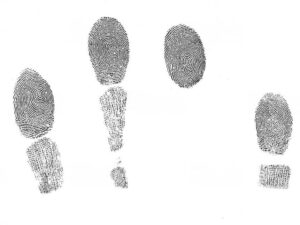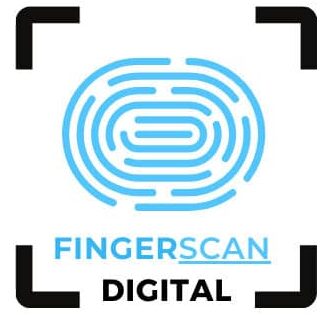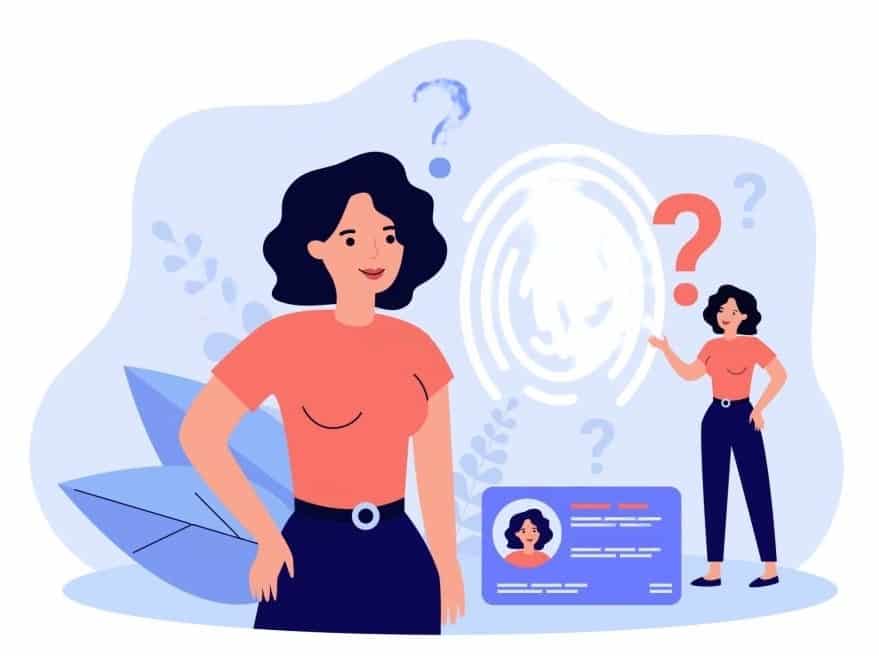In an era where our lives are intricately intertwined with technology, safeguarding our personal information has become paramount. Traditional security methods are gradually giving way to innovative solutions, and among these, fingerprint cards have emerged as a groundbreaking technology transforming the landscape of personal security. Below, we delve into the comprehensive details of the 20 ways fingerprint cards are revolutionizing how we protect our sensitive information.
1. Biometric Precision: Fingerprint cards harness the remarkable uniqueness of each individual’s fingerprints, converting these intricate patterns into a biometric key for unlocking security systems.
2. Fortified Passwords: Unlike conventional passwords that can be forgotten, guessed, or even stolen, your fingerprint remains an inimitable, ever-present code for unlocking your security measures.
3. Instant Authentication: With a simple touch, fingerprint cards provide swift and near-instantaneous access to devices, accounts, or restricted areas, making cumbersome logins a thing of the past.
4. Impenetrable Fraud Defense: The use of fingerprint authentication significantly reduces the risk of identity theft and fraud, as duplicating a person’s unique fingerprint is a nearly insurmountable challenge.
5. Physical Access Mastery: Offices, laboratories, or high-security facilities can now implement fingerprint card systems to ensure only authorized personnel gain entry, thereby bolstering security at critical locations.
6. Document Fortress: Fingerprint cards seamlessly integrate with secure document management systems, granting access only to those with authorized fingerprints, thus thwarting unauthorized document breaches.
7. Contactless Transactions: Fingerprint cards can be intricately linked to payment methods, paving the way for secure and convenient transactions that eliminate the need for physical cards or vulnerable PINs.
8. Expedited Travel: Airports are embracing fingerprint card technology to streamline security checks and immigration processes, affording frequent travelers the luxury of seamless and efficient travel experiences.
9. Medical Data Guardianship: Fingerprint-based access safeguards your medical records, ensuring that only authorized medical personnel can retrieve your sensitive health information.
10. Haven of Smart Homes: Fingerprint cards establish an additional layer of security, dictating access to your smart home devices, thereby ensuring that your personal space remains truly private.
11. Password Panacea: Fingerprint cards take center stage in the realm of password management, functioning as a master key to access password repositories, mitigating the need to juggle multiple complex passwords.
12. Shielding Child Safety: Fingerprint cards offer an innovative solution for ensuring the safety of children. They enable only authorized individuals to pick them up from school or daycare, reinforcing child security.
13. Campus Vigilance: Educational institutions are incorporating fingerprint cards to enhance security in dormitories, laboratories, libraries, and other areas, creating a safer environment for students and faculty.
14. Event Elegance: Fingerprint cards are replacing traditional tickets, granting secure and hassle-free entry to concerts, conferences, sports events, and other gatherings.
15. Data Lockdown: Fingerprint cards play a pivotal role in encrypting sensitive data stored on devices, acting as a robust safeguard against unauthorized access and data breaches.
16. ATM Sentinel: Fingerprint-enabled ATMs offer a secure and user-friendly way to withdraw cash, virtually eliminating concerns about card skimming or PIN theft.
17. Vehicular Vigil: Fingerprint cards are envisioned to be employed for starting vehicles, serving as an impregnable barrier against unauthorized usage and vehicular theft.
18. Emergency Assurance: In critical situations, fingerprint cards can provide emergency responders with access to vital information like medical history and emergency contacts, expediting life-saving efforts.
19. Remote Bastion: Fingerprint cards establish secure remote access to networks and systems, alleviating the reliance on complex passwords and potentially vulnerable authentication methods.
20. Personalized Protection: The versatility of fingerprint recognition extends to personalizing services. From tailored shopping experiences to customized hotel stays, this technology enhances convenience and security simultaneously.

Fingerprint cards represent an epochal shift in personal security paradigms. As they seamlessly fuse cutting-edge technology with user convenience, these cards are revolutionizing the way we protect our identities, confidential data, and physical surroundings. As technology continues its dynamic progression, the future promises even more ingenious applications for fingerprint cards, solidifying their status as pivotal components in the evolution of personal security. So, the next time your fingerprint unlocks your device, acknowledge that you’re part of a security revolution that empowers you with unrivaled protection at your very fingertips.
Frequently Asked Questions (FAQs) –
Fingerprint Cards and Personal Security
1. What are fingerprint cards?
Fingerprint cards are small, portable devices that use biometric technology to authenticate individuals based on their unique fingerprint patterns. They are used as a secure and convenient method of accessing devices, systems, and physical locations.
2. How do fingerprint cards work?
Fingerprint cards capture and store a person’s fingerprint data. When a user places their finger on the sensor, the card’s technology analyzes the unique patterns of the fingerprint and compares it to the stored data for authentication.
3. Are fingerprint cards more secure than traditional passwords?
Yes, fingerprint cards offer a higher level of security compared to traditional passwords. Fingerprint patterns are unique to each individual, making it extremely difficult for unauthorized users to replicate or guess.
4. Can someone else use my fingerprint card?
No, fingerprint cards are personalized to your unique fingerprint. Someone else cannot use your card to gain access unless their fingerprint matches the stored data on the card.
5. Are fingerprint cards hack-proof?
While no system is entirely hack-proof, fingerprint cards provide a strong layer of security. Attempts to replicate fingerprints are complex and require significant effort, deterring most hackers.
6. What happens if my fingerprint changes due to injury or aging?
Most modern fingerprint card systems accommodate changes in fingerprints due to factors like injuries or aging. They often include advanced algorithms that adapt to slight variations while ensuring accurate authentication.
7. Can fingerprint cards be used for multiple purposes?

Yes, fingerprint cards have versatile applications. They can be used for device unlocking, accessing secure areas, making payments, securing documents, and more.
8. Are fingerprint cards widely accepted?
Fingerprint card technology is gaining acceptance in various sectors, including banking, healthcare, travel, and access control. However, acceptance might vary depending on the region and industry.
9. What happens if I lose my fingerprint card?
Losing a fingerprint card can be similar to losing any other form of identification. It’s important to report the loss to the relevant authorities or service providers to ensure that unauthorized access is prevented.
10. Can fingerprint cards be used by multiple people, like in a family setting?
Yes, some fingerprint card systems allow for multiple users to be registered. This can be useful in a family or shared environment where multiple individuals need secure access.
11. Are fingerprint cards easy to set up?
Fingerprint cards are designed to be user-friendly. Setting up the card usually involves enrolling your fingerprint data, which is a straightforward process in most cases.
12. Can fingerprint cards be used for remote access?
Yes, fingerprint cards can be used for remote access to networks and systems, reducing the need for complex passwords and enhancing security.
13. Can fingerprint cards be used by people with disabilities?
Fingerprint card systems typically offer accessibility features to accommodate a wide range of users, including those with disabilities. However, it’s important to check for specific accessibility options.
14. Are fingerprint cards a part of the future of personal security?
Absolutely. Fingerprint cards are poised to play a significant role in the future of personal security due to their convenience, reliability, and strong authentication capabilities.
15. What advancements can we expect in fingerprint card technology?
As technology evolves, fingerprint card systems may integrate more advanced algorithms, biometric features, and even enhanced encryption methods to further strengthen security and usability.
Fingerprint cards are at the forefront of modern personal security solutions, offering a seamless blend of convenience and robust protection against unauthorized access. As the technology continues to evolve, these FAQs provide a comprehensive overview of their functioning, benefits, and implications for users across various sectors.

In conclusion, the advent of fingerprint cards has ushered in a new era of personal security that seamlessly merges cutting-edge technology with user-friendly convenience. These unassuming devices have demonstrated their remarkable potential to reshape how we safeguard our identities, confidential information, and physical spaces. Read more to know fingerprint card
As we navigate an increasingly digital landscape, the importance of strong security measures cannot be overstated. Fingerprint cards offer a comprehensive solution by leveraging the uniqueness of our fingerprints as a biometric key. This not only enhances security but also streamlines our daily interactions with devices, systems, and secure areas.
While no security solution is entirely impervious to potential threats, fingerprint cards provide a formidable defense against unauthorized access. The intricate patterns of our fingerprints are incredibly difficult to replicate accurately, deterring most would-be hackers and fraudsters.
As technology progresses, fingerprint card systems are likely to evolve as well. Advanced algorithms, integration with other biometric features, and enhanced encryption methods are among the potential advancements that could further fortify the security offered by these cards.
In embracing fingerprint cards, we are participating in a security revolution that empowers us with an unprecedented level of protection. With each fingerprint touch, we’re not just unlocking a device or accessing an area; we’re asserting control over our digital and physical lives in a way that was once the realm of science fiction.
So, the next time you place your finger on that small sensor, remember that you’re part of a transformative shift in personal security—one where the future is quite literally at your fingertips.
Read more articles about fingerprint card

